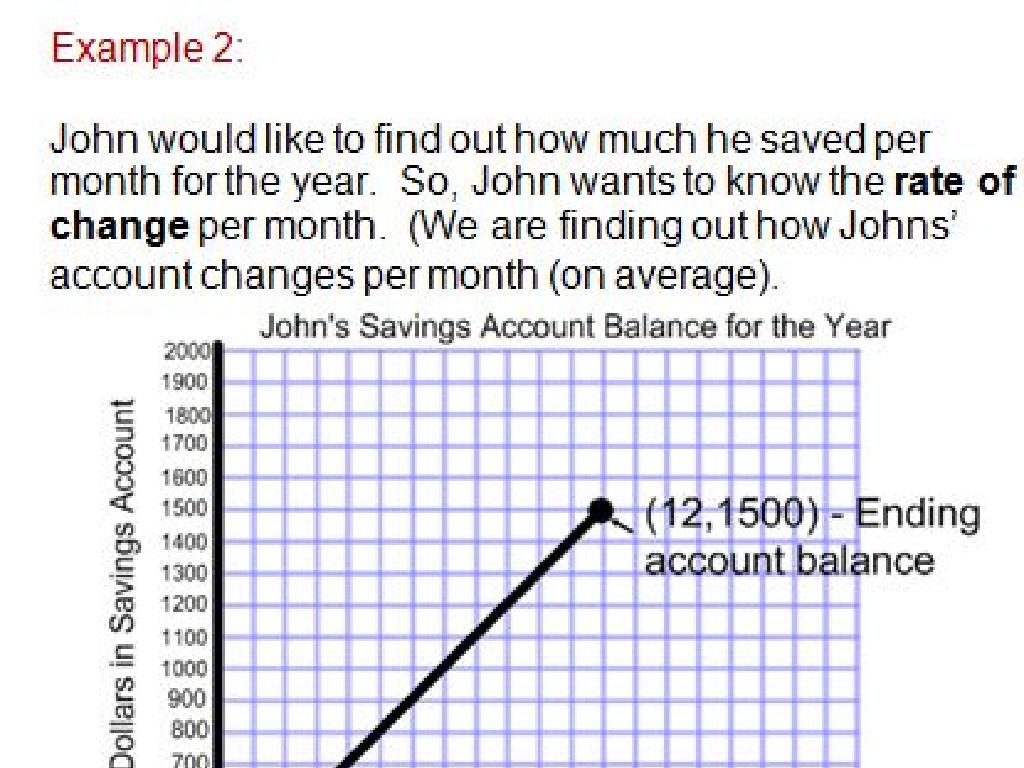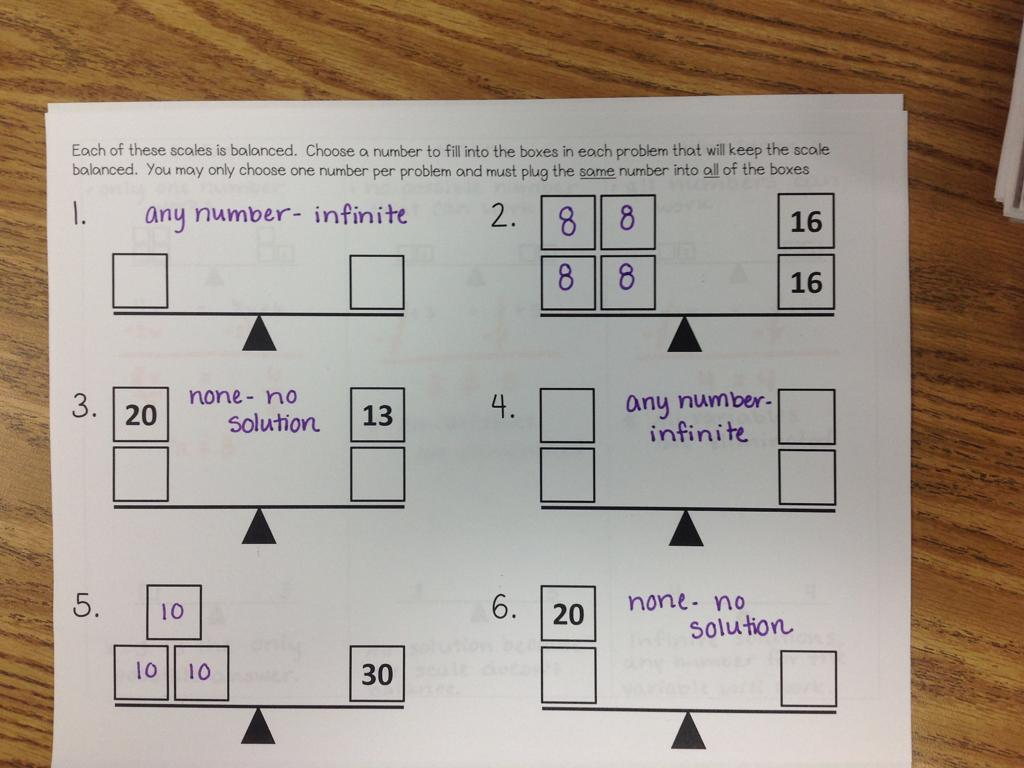Is The Sentence Declarative, Interrogative, Imperative, Or Exclamatory?
Subject: Language arts
Grade: Fourth grade
Topic: Sentences, Fragments, And Run-Ons
Please LOG IN to download the presentation. Access is available to registered users only.
View More Content
Welcome to Sentence Types!
– Today’s goal: Identify sentence types
– Understanding a sentence
– A sentence shares a complete thought with a subject and a verb.
– The Four Sentence Types
– Declarative states a fact. Interrogative asks a question. Imperative gives a command. Exclamatory shows strong feeling!
– Practice identifying them
– We’ll look at examples and figure out which type each one is.
|
This slide introduces the concept of different sentence types to the students. Begin by explaining what constitutes a sentence, emphasizing the presence of a subject and a verb to express a complete thought. Then, introduce the four types of sentences: declarative, which makes a statement; interrogative, which asks a question; imperative, which gives a command or request; and exclamatory, which expresses strong emotion. Use examples to illustrate each type, such as ‘The sky is blue.’ (declarative), ‘What time is it?’ (interrogative), ‘Please sit down.’ (imperative), and ‘Wow, that’s amazing!’ (exclamatory). Encourage students to come up with their own examples and to practice identifying the type of sentence. This will prepare them for activities where they will apply this knowledge.
Exploring Sentence Types
– Definition of a sentence
A sentence is a group of words that forms a complete thought.
– Subject and predicate
Every sentence contains a subject (who or what) and a predicate (tells about the subject).
– Capital letters and punctuation
Sentences start with a capital letter and end with a period, question mark, or exclamation point.
– Types of sentences
Sentences can be declarative, interrogative, imperative, or exclamatory.
|
This slide introduces the basic concept of a sentence to the students. It’s important to emphasize that a sentence is not just a random collection of words, but a complete thought. Highlight the need for a subject and a predicate as the essential components of a sentence structure. Also, stress the importance of proper capitalization and punctuation, which signal the beginning and end of a sentence. Finally, introduce the four types of sentences: declarative (statements), interrogative (questions), imperative (commands), and exclamatory (strong feelings). Use examples to illustrate each type. Encourage students to come up with their own sentences and identify the types.
Types of Sentences: Declarative
– Declarative sentences state facts
– They tell us something and give information
– They always end with a period
– Look for the full stop at the end
– Example: ‘The cat is sleeping.’
– This sentence shares information about the cat
|
This slide introduces declarative sentences, which are the most common type of sentence used to convey information or facts. They are straightforward and end with a period. Use the example provided to show students how a declarative sentence functions. Ask students to find declarative sentences in their favorite books or to come up with their own examples. Emphasize the importance of the period at the end of these sentences, as it signifies a statement rather than a question or command. Encourage students to listen for these sentences during reading time and to practice writing them during writing exercises.
Exploring Interrogative Sentences
– Interrogative sentences ask questions
– These sentences are looking for an answer.
– They always end with a question mark
– Remember, if it’s a question, it needs a question mark!
– Example: ‘Are you going to the park?’
– This sentence asks about going to the park.
|
This slide introduces students to interrogative sentences, which are used to ask questions. Emphasize that these sentences always end with a question mark. Provide the example ‘Are you going to the park?’ and ask students to identify it as a question. Explain that whenever they want to ask something, they should use an interrogative sentence. Encourage them to come up with their own examples of questions they might ask their friends or family. This will help them understand how to form questions and use them in their daily conversations.
Exploring Imperative Sentences
– Imperative sentences give commands
– They tell us to do something, like ‘Sit down.’
– They can end with a period or exclamation mark
– Use a period for calm commands, exclamation mark for urgency!
– Example: ‘Please close the door.’
– This is a polite request to close the door.
|
Imperative sentences are used to issue commands or requests. They are an important part of our daily communication, allowing us to direct others. While they typically end with a period, they can also end with an exclamation mark to express urgency or strong emotion. It’s crucial for students to recognize the tone of the command to determine the appropriate punctuation. During the lesson, provide various examples and let students create their own imperative sentences, both with periods and exclamation marks, to understand the difference in tone.
Exclamatory Sentences
– Express strong emotions
– Show excitement, surprise, or other feelings
– End with an exclamation mark!
– The exclamation mark is key!
– Example: ‘What a beautiful day!’
– It’s not just a statement, it’s an exclamation
|
Exclamatory sentences are used to convey strong emotions such as excitement, surprise, happiness, or anger. They are easily identified by their ending punctuation, which is always an exclamation mark. This punctuation is crucial as it differentiates an exclamatory sentence from a declarative one. For example, ‘What a beautiful day!’ expresses a strong feeling of happiness about the day’s beauty. Encourage students to think of times they’ve used such sentences in their own speech or writing and to practice creating their own exclamatory sentences to express different emotions.
Let’s Practice Sentence Types!
– Identify sentence types
– Understand why it’s a specific type
– Is it a fact, question, command, or strong feeling?
– Practice with a classmate
– Take turns reading sentences and guessing types
– Share what you’ve learned
– Discuss with the class your examples and answers
|
This slide is for a class activity where students will practice identifying different types of sentences: declarative, interrogative, imperative, and exclamatory. The activity is designed to reinforce their understanding of sentence structures and their purposes. Students should work in pairs to read sentences and determine their types, discussing the context clues that indicate each type. For example, an interrogative sentence ends with a question mark, while an exclamatory one conveys strong emotion and ends with an exclamation mark. After the activity, encourage students to share their findings with the class to facilitate a group learning experience. Provide guidance and clarification as needed.
Class Activity: Sentence Scavenger Hunt
– Find sentence types in a book
– Look for declarative, interrogative, imperative, exclamatory
– Write sentences on worksheet
– Write down the examples you find
– Share with the class
– Discuss the sentences you found and why they fit the category
|
This activity is designed to help students identify and understand the four types of sentences: declarative, interrogative, imperative, and exclamatory. Provide each student with a worksheet where they can record their findings. Encourage them to choose their favorite book to make the activity more engaging. After they have found and written down examples of each sentence type, organize a sharing session where students can present their sentences and explain why they categorized them as such. This will reinforce their understanding and allow for peer learning. Possible variations of the activity could include finding sentences in magazines, writing their own examples, or creating posters with their sentences displayed.
Sentence Types: Conclusion & Homework
– Review sentence types: declarative, interrogative, imperative, exclamatory
– Homework: Write 2 examples for each sentence type
– Declarative: ‘The sky is blue.’, Interrogative: ‘What time is it?’, Imperative: ‘Please sit down.’, Exclamatory: ‘What a beautiful day!’
– Think about how each sentence is used
– Share your sentences next class
|
As we wrap up today’s lesson, let’s quickly recap the four types of sentences we’ve learned. Declarative sentences make a statement, interrogative sentences ask a question, imperative sentences give a command, and exclamatory sentences express strong emotion. For homework, I want each of you to write two original examples of each type of sentence. This will help reinforce what we’ve learned and give you a chance to practice. In our next class, we’ll share some of these sentences. This will be a great opportunity for you to see how your classmates use language creatively and to learn from each other. Remember, the goal is to understand how the structure and punctuation of a sentence can change its purpose and tone.






